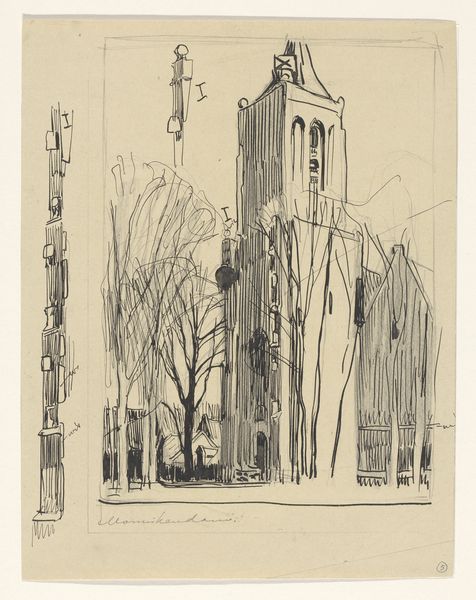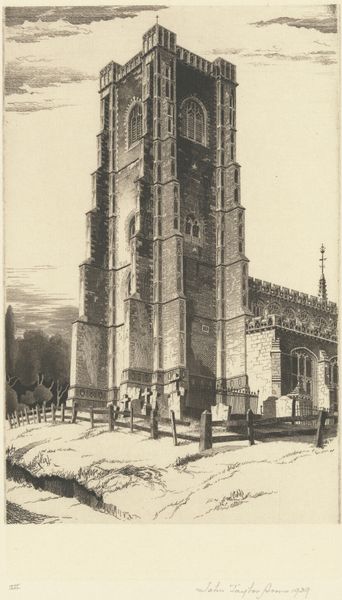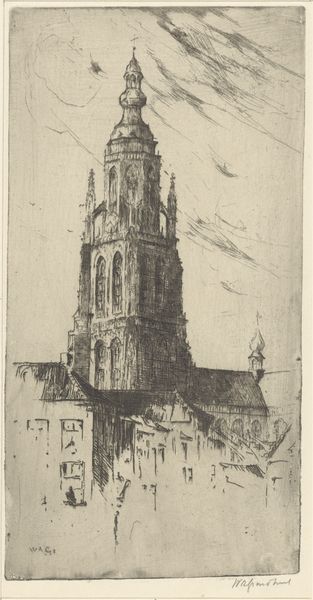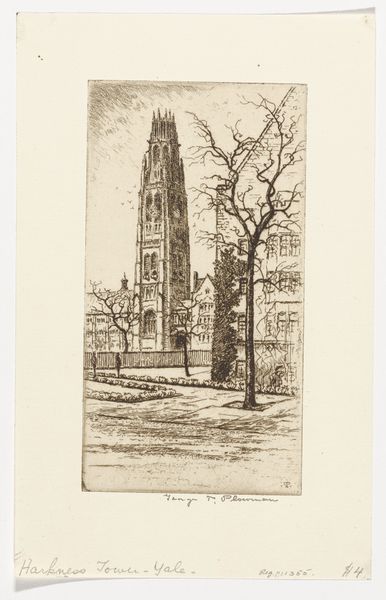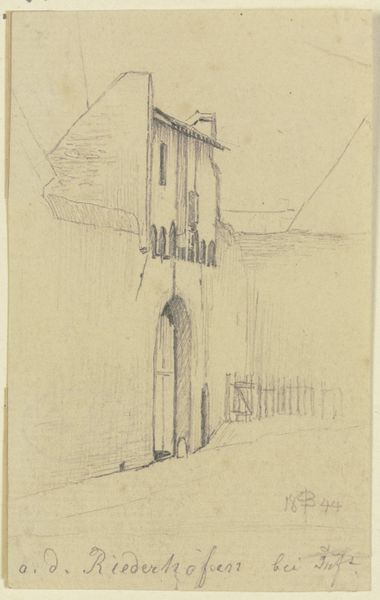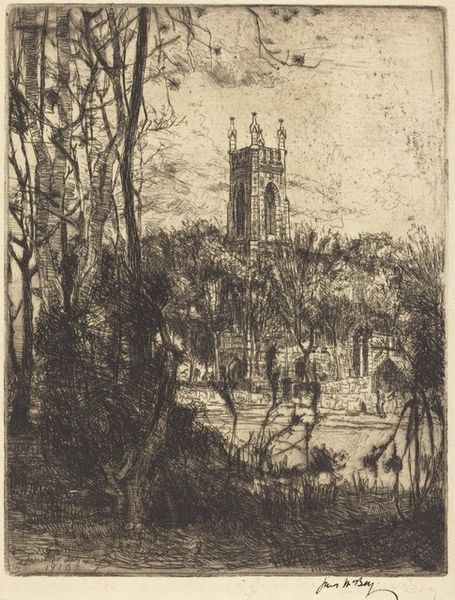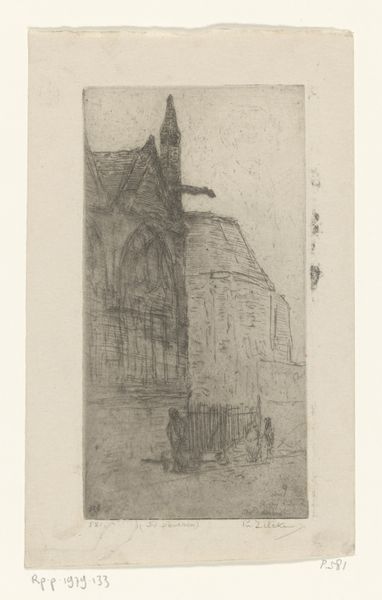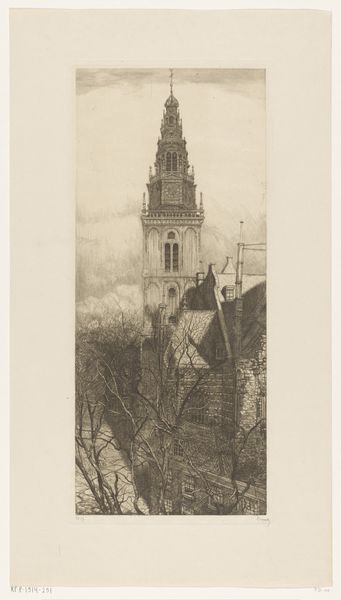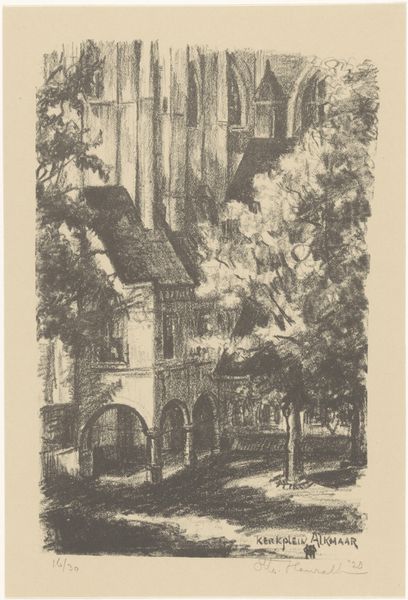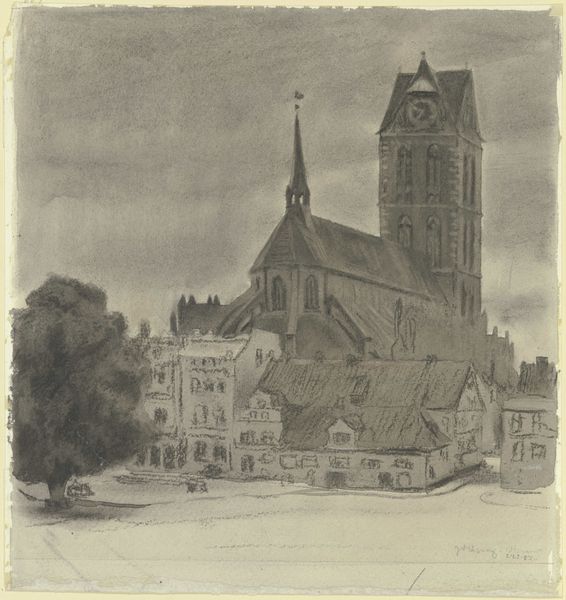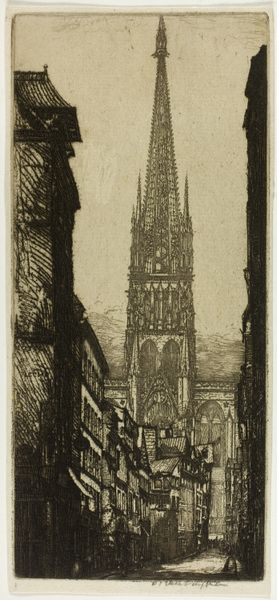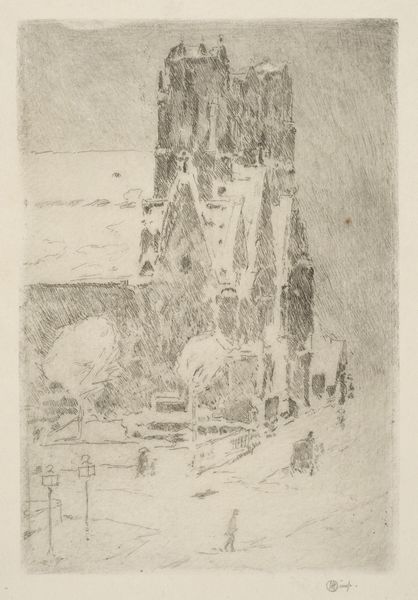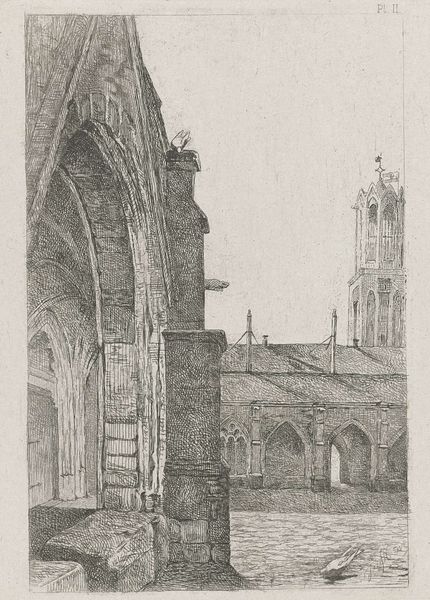
Copyright: National Gallery of Art: CC0 1.0
Curator: This print, titled "Damme," was created by David Young Cameron in 1907. What are your first impressions? Editor: Well, the atmosphere is instantly striking. It's got a rather brooding quality to it, wouldn’t you say? Almost gothic in its stark contrasts and composition with the skeletal trees framing the architecture. Curator: It’s important to consider Cameron's process. The etching technique, using acid to bite into the metal plate, would allow for a high degree of control in rendering those fine lines and tonal variations, giving it that somewhat stark look. The material limitations themselves would, in some ways, force the image into being. Editor: And think of the historical moment. Turn-of-the-century Europe, rapidly industrializing, while grappling with legacies of empire. Places like Damme were being impacted profoundly. You see it in how the looming church sort of dominates the scene – power, tradition… contrasting the daily life of villagers struggling in its shadow. Curator: I agree. It's important to see the connection to earlier traditions of printmaking as well as new developments in industrial technologies making images, like this one, so easily reproducible. Note the subtle shifts in light—how he uses that aquatint effect in the sky to create a velvety darkness behind the towering form of the building. A clear manipulation of the medium to convey depth. Editor: Exactly! The starkness speaks volumes. How systems of power, and religious institutions specifically, influenced and controlled social structures, often disproportionately affecting marginalized communities of the time. It acts as a commentary on uneven distributions of labor, opportunity and material wealth during this era. Curator: It gives us much to think about—Cameron's manipulation of material and technique resulted in a pretty powerful rendering. Editor: Yes, “Damme” isn't merely a landscape; it's a subtle critique of the forces at play shaping early 20th-century European society and power dynamics.
Comments
No comments
Be the first to comment and join the conversation on the ultimate creative platform.
